The Points "Meta"
These are just my personal thoughts and should not constitute any form of financial advice, but instead help give you an idea behind my thoughts and trades. Cheers and good luck out there.
Tartoshi
3/13/202411 min read
This article is going to be about the points “meta.” The term “Meta Game,” first coined by Cobie, described trading the current attention of participants in a game. The Birds Eye view if you will, of what everyone is chatting about on CT, Discord, Farcaster, your favorite crypto native podcast etc. I do believe we are in the intersection between more than just the points meta, I think there are other “meta games” playing out all at the same time. The memecoin meta, the gaming meta, the depin meta, the AI meta. All of which to me still look to be in the early days. For this article I will focus on the points meta as I believe it was the first real meta at the start of this bull run, which is on its way to reach maturity. I may hold positions in these coins, not financial advice, dyor etc. Let’s get into it. (Subscribe to my substack here for an annotated version)
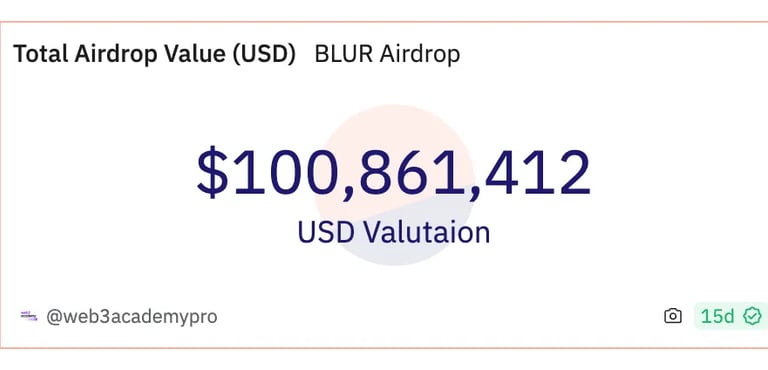

Blur absolutely dominated it's competition, taking almost all of opensea's usersbase + revenue with this incentive system. They included a loyalty mechanic, which would reduce the reward for those in the Blur ecosystem if they had used other NFT trading platforms. This was a blow to competitors, in fact it later drove Opensea to open itself up to acquisition at a huge discount to it’s previous raise. This textbook vampire attack, is exactly the ethos of Web3 and at the pace at which blur was able to do it was even more impressive. If you don't listen to your userbase they will leave eventually. Eventually someone else will make a better product. Opensea did not create a token which participants were eagerly waiting for. Blur promised a token system that was highly incentivized and reflexive. As we can see there was a clear winner in this market. At the end of S2, users were rewarded with a valuable token that reflected their participation and contribution to the Blur protocol.
By the end of S2, nobody though that pacman could keep this ponzi running forever, and that's when they got hit with a bombshell (no pun intended). The announcement of Blast. The first ever L2 built on top of eth with a native yield. The introduction of Blast sparked a new wave of excitement and anticipation among participants. Blast was now going to incentivize all participants of the Blur ecosystem by rewarding S3 users with [Redacted] from $blast, and now also offered a whole new game to play. A much much bigger, and shinier game to play.
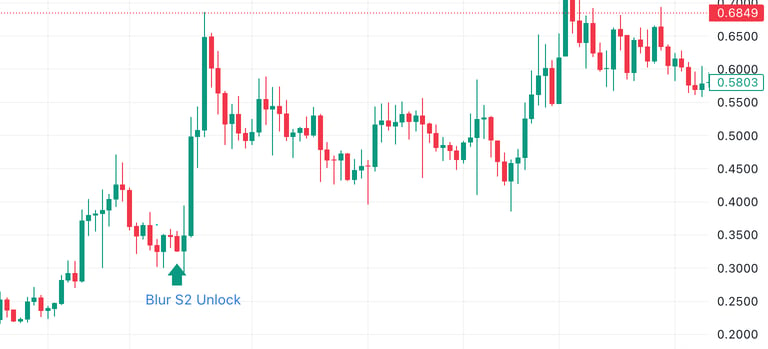

Which brings us to where we are today. Blast was able to unlock huge pools of liquidity by solving a simple financial problem, offering users a greater return on their investment by doing what they would already be doing on other L2s.
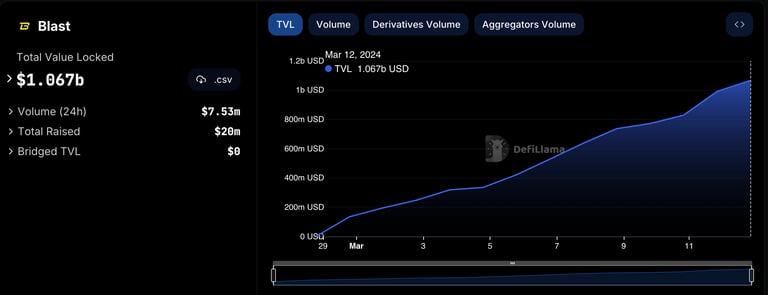

The linear points game created by Blur S1 + S2 introduced a revolutionary incentive system, and now it was time for everyone else to follow. Pacman fired off the the starting pistol to begin the race, and all the rest had to was follow.
Jito, the liquid solana staking protocol. Comparable to the Lido of the Ethereum world, came into the scene. Released shortly after Blur released its S2 rewards.
Jito introduced a tiered points system, similar to that of blur JTO users were rewarded 1 point per sol they held in the protocol. These points would then later be redeemed for governance token in the JTO protocol.
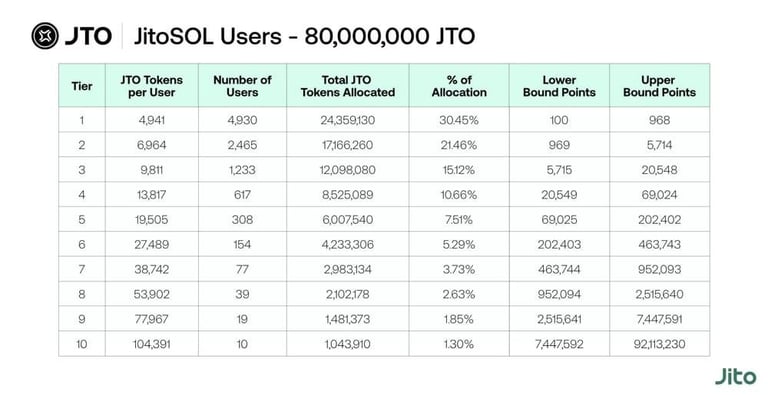

Jito tokens were valued at over $20k+ for the smallest tier of user soon after their release. For the largest participants in the market, they were awarded well over $400k+. The reason why it worked so well was because while there were not many participants in this game, only 10k or so, the amount of JTO staked was very real. The use cases were very real as well, JTO had a very promising APY yield to it’s stakers and managed to also create some pretty enticing Solana MEV products. The landscape, of Solana MEV has changed considerably since then. However, a Lido equivalent on Solana was still very much necessary.
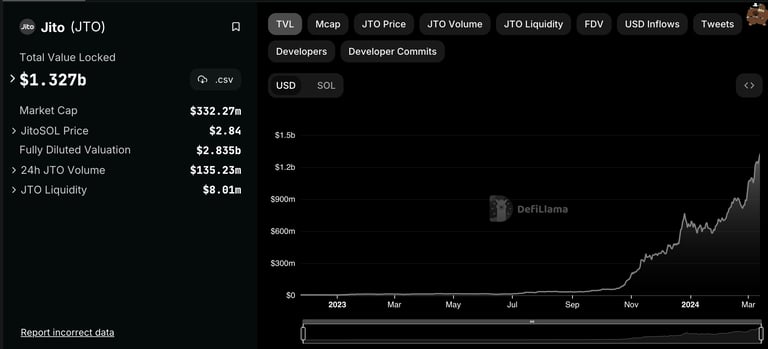

The introduction of the tiered points system by Jito quickly brought attention to the already bubbling solana ecosytem and other protocols quickly made the correlation. With the right incentives users will come. The race was on every other protocol wanted to benefit from the flywheel. Parcl, Hyperliquid, Ethena, Eigenlayer, Drift, Marginfi, Kamino, Grass to name a few all joined the starting line.
Kamino and Marginfi were two cloths of the same thread. Offering lending, and borrowing defi mechanics to participants on Solana. Kamino and Marginfi recognized the power of incentives and saw an opportunity to leverage a points system to drive user engagement.
They both boasted competitive yields and APY's on several of the major Solana coins, including Solana itself and USDC, and they both also offered a very similar points system. So who would come out on top and where would users allocate funds to? Likely the protocol offering the best yield right? Well, not necessarily.
The rules of the game were simple. Marginfi incentivized each dollar supplied into it's protocol earning yield with 1 point and each dollar borrowed with 4 points. Kamino offered 1 point per dollar supplied, and 1 point per dollar borrowed. With varying boosts, for example if you supplied solana you would get a 5x points boost. Or if you borrowed USDC you would get a 3x points boost on each dollar borrowed. They would go on to variably change these boosts to encourage staking and lending on new assets.
Many participants were excited by the Marginfi team and the prospects of a new US based team with US regulations on the market and marginfi with it's sleek interface drew many new users in. Quickly capturing a large market share of the defi activity and TVL for lending/supplying. Whereas Kamino was right in there as a close second for share of TVL and marketshare in the Solana defi space. With the introduction of their points systems, both Kamino and Marginfi were able to attract a significant number of users to their platforms.
Marginfi's founder quickly boasted their success on twitter, and kept edging their communities hard with the potential rewards and benefits of participating in their platform. Participants got increasingly excited about it's prospects. However, as time drew on users began to become weary of the founders promises, and some valid questions arose. When would the users see a clear and communicated timeline on the chain of events in regard to the point system and the TGE. Confronted with the uncertainty surrounding the point system and token launch, users became skeptical of Marginfi's intentions and began to question the validity of their promises. Still TVL began to increase despite these valid concerns, based solely on just the yields found in the protocol. Which I would argue is a fair play by the Marginfi team, and still probably why they will continue to find success going forward.
Kamino on the other hand, picked up where marginfi did not and by offering a roadmap and a timeline on their rewards system as well as an open dialogue with the community. They were able to capture more users and attention, flipping marginfi in it's defi dominance in both TVL and user engagement. I would suspect this one fatal flaw on marginfi, of being dishonest with users or of farming users for lack of a better term is going to have pretty large impacts on its valuation in its tge. In this game after all, winner takes all. Kamino's token snapshot was announced for the end of this month, so I guess we will find out.
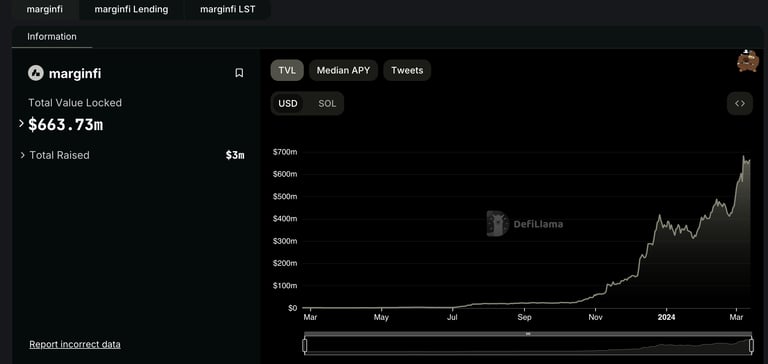

The linear points game by Blur S1+S2 & Blast
The points meta is a time based weighted approach to rewarding users. That revolves around trading the attention and sentiment of participants on various Dapps and communities. It is based on the idea that the value of a cryptocurrency or token is influenced by the level of interest and engagement it receives from users. Started by Pacman, the founder of Blur and now Blast. He created one of the best incentive systems in the crypto space. A linear points reward system. Essentially what you put is what you got out. Incentivizing real users and discouraging sybillers. Top farmers were airdropped 8fig bags, and many of the smaller farmers got away with modest sized 5&6fig airdrops. Sybillers, awarded with dust. Sybillers because their approach often involved the use of spamming small TXs across hundreds of accounts, contributed little to the time based weighted approach that the linear points system used and therefore were rewarded with significant less then real users.
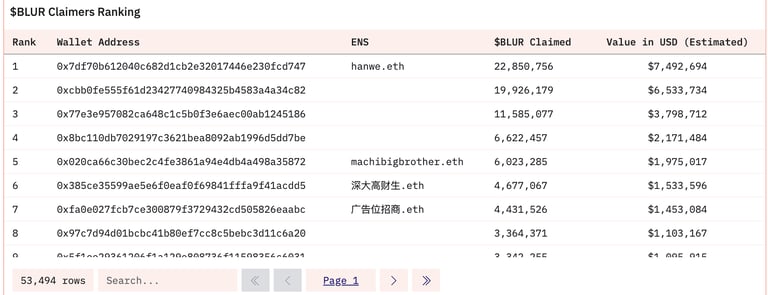

The concept of sybilling is not new to the crypto currency space, in fact some of the very protocols mentioned in this article might be target to sybillers and gamers of the system. However this is all a part of the game we are playing at large. The linear points system worked because gaming the system in itself (the use of bots, coordinated attacks on the orderbook, stink bids etc.), still aligned with the overall growth of the protocol. Take for example the stink bid, where users strategically place low bids in order to trigger panic selling and buy assets at a discounted price. In an illiquid market like NFTs stink bids are still increasing the depth of the order book by a significant margin. When I was farming Blur S2 myself often, I would place large orders of stink bids in order to maintain liquidity and create opportunities to earn points. While then going ahead and top bidding collections that I viewed as collectively safer. What this did in a sense was to help create deeper liquidity in a whole for the entire ecosytem. The game was designed so that those who provided the most liquidity at the best market price on the top collections, would earn the largest share of the slice of the points pie. If every participant was incentivized to play this way in aggregate the protocol would flourish.
We saw people get airdropped houses in S1. Now when S2 was announced, nobody believed the same ponzi could keep on going. While there was an frenzy of users, running back into S2 with profits from S1. That race, became quickly tiring for users as the price action of the cryptocurrency became more volatile and unpredictable at that current time. Remember we've just retraced some 70%+ odd percent on most of the majors from the FTX/Terra bubble. No one know if the market just had the gas left in its tank to keep the engines turning for another season. Which became increasingly weary as there was no timeline announced for the end of S2. Most users faded hard, feeling uncertain about the future and the sustainability of the protocol.
Little did we participants know the giga ponzi that pacman was unveiling right before us. Amidst the uncertainity of large LPs in the blur ecosystem, new features were added. Starting with Blend, a p2p lending protocol for NFTs. You could now buy and borrow against your "illiquid" NFT assets. Then trait bidding was announced, here you can now bid on specific traits of your favorite NFTs with the same features as you would find in a traditional orderbook. With these new features, they further incentivized users by adding the points incentives to the new features which were now also juiced up. Quickly attention and liquidity came back. With the right incentives the users will come.
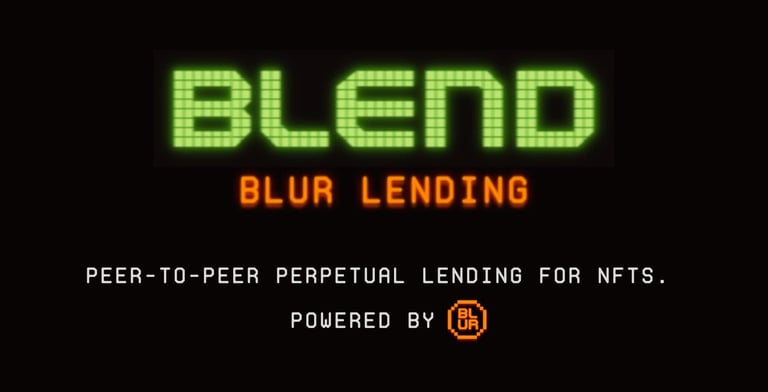

Jito Incentivizing Real Users: A tiered points system
Farm points, don't get farmed: Kamino and Marginfi
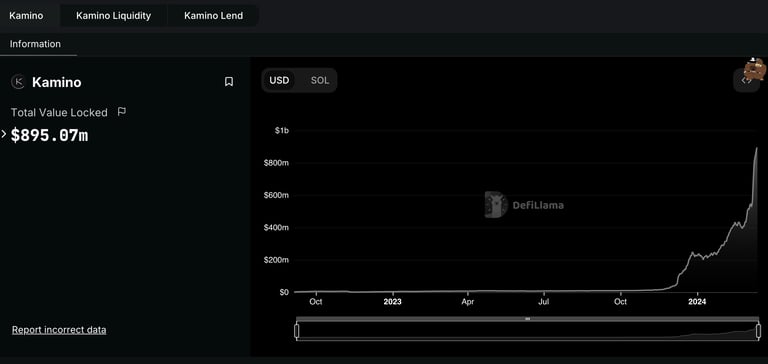

A Participants perspective: What am I focusing on?
As a participant of this metagame, I saw how fruitful Blur S1+S2 was. I saw the flywheel take place in front of me and the rest of the crypto space did too. For now I am positioned mainly in Kamino farms, Blast and Blur. Im also participating in Parcl, Grass and Tensor. From my perspective, your core holdings should be your core holdings you shouldn't do much with them besides let the exponential trend of the asset class playout. However, with these new points system in play it is now too easy too get an additional yield on your base asset. You can now earn a yield + points + the appreciation of your current asset portfolio. Points to be converted to equity in these protocols later on.
I think farming blur might end up having a better RR then farming blast in the end, as it seems largely underfarmed in comparison to S2 with less users and ETH locked into the blur pools. I also understand that farming blur is also very risky, so I would not recommend doing it without the use of bots. Right now flowtools by creed alpha is that bot that I am using to farming points. It’s UI is pretty easy to get around, and bid reaction time is pretty quick. Although there are a few bugs, such as occasionally getting double filled. The bot makes it easy to farm aggressively and with strategy.
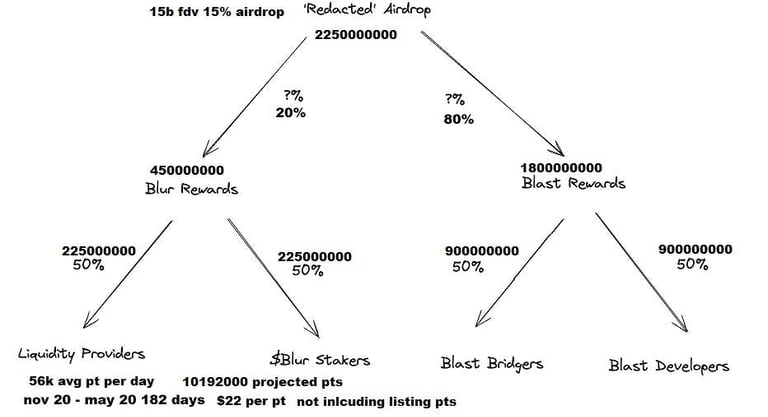

One protocol that I am really excited for is Grass. Grass is completely free to farm, and is at the nexus of so many metas. AI, Depin, Solana, L2 rollups. It checks all the boxes and is completely free to farm. They way it works is that grass uses your unused browsing resources, and redistributes them to AI algorithms for data processing, creating a decentralized computing network. It in essence creates an arbitrage on the super high API fees and costs to train an LLM. It's seamless and easy to use. If you can read this article you can likely farm some $grass completely for free, earning passive income while contributing to the decentralization and efficiency of AI algorithms.
I touched on Tensor as well, which I generally like because it offers the same mechanic as Blur on Solana. They’ve confirmed their token on twitter, and we should be seeing $TNSR pretty soon. They offer liquid NFT trading markets on Solana, and have some pretty cool features such as Price Locks. Where you can “lock in” a price of an NFT and bet on it going up or down over a predetermined period of time. Similar to an option call. I think Tensor has a strong chance at taking the largest share of Pie of the Solana NFT market next to Magic Eden (who respectively have their own points system as well now).
Parcl is another really interesting points protocol to look, liquid trading for live Real estate markets across the world. In essence you can buy and sell shares of real estate prices. I actually am not really sure if there is a need for this protocol, but I also do think there was an arbitrage opportunity here. Where the TVL of the protocol at the time was low enough (around sub 10m for a vast majority of the time it’s points system was running), to potentially do really well as a long tail bet on the Solana ecosystem as whole. New ICO’s and TGE’s w/ incentives systems have been preforming handsomely and finding any under farmed linear points system could prove to be quite lucrative for early adopters.
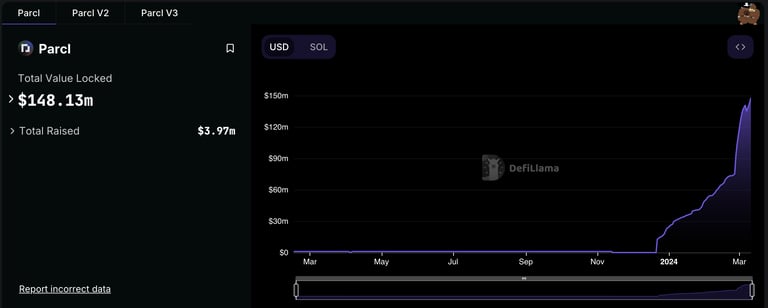

When participating in cryptocurrency markets, it is important to consider the security of the system as well as the economic risks associated with yield farming opportunities. Hope you found this helpful and good luck out there.
